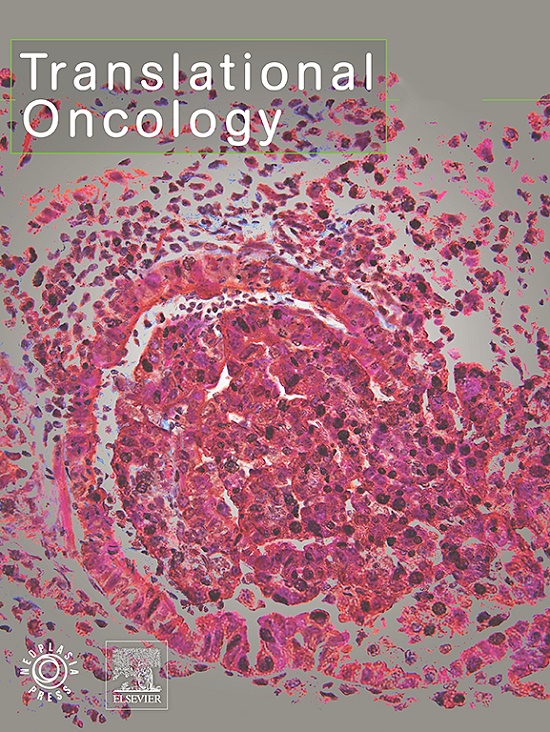全球、区域和国家对育龄女性癌症负担和风险因素的估计:全球疾病负担研究和贝叶斯预测到2030年的系统分析
IF 5
2区 医学
Q2 Medicine
引用次数: 0
摘要
育龄妇女女性癌症的预防、管理和治疗是实现世界卫生组织(世卫组织)全球乳腺癌倡议和消除宫颈癌倡议中概述的目标的关键战略。本综述旨在提供1990年至2021年育龄妇女女性癌症负担及其归因风险因素的全面全球、区域和国家估计。方法根据全球疾病、损伤和风险因素负担研究(GBD) 2021方法,我们估计了育龄妇女乳腺癌、宫颈癌、卵巢癌和子宫癌的发病率、残疾调整生命年(DALYs)和死亡率。使用年龄调整百分比变化(AAPC)评估时间趋势。使用人口归因分数估计危险因素,并按社会人口指数(SDI)分层。到2030年的预测是使用贝叶斯模型生成的。结果2021年,WCBA中乳腺癌、子宫癌、宫颈癌和卵巢癌的全球发病率分别为561438例(95%不确定区间[UI]: 523,147-602,978)、58,860例(95% UI: 50,765-65,452)、307,428例(95% UI: 280,667-335,692)和85,749例(95% UI: 75,169-95,090),对应的年龄标准化发病率为每10万人28.1(95%置信区间[CI]: 28.0-28.1)、2.9 (95% CI: 2.9 - 3.0)、15.4 (95% CI: 15.4 - 15.5)和4.3 (95% CI: 4.3 - 4.4)。乳腺癌的DALYs数量最多,为6659460 (95% UI: 6192,226 - 7145,549),其次是宫颈癌,为4184,314 (95% UI: 3779,640 - 4629,604)。多吃红肉、吸烟和饮酒的饮食分别导致11.2%、2.5%和2.6%的乳腺癌死亡,而无保护的性行为占宫颈癌死亡的大部分。肥胖占卵巢癌和子宫癌死亡的30.2%。贝叶斯预测模型显示,到2030年,WCBA人群乳腺癌和卵巢癌的全球年龄标准化发病率将分别达到31.5 / 10万人和4.7 / 10万人。在全球范围内,WCBA中乳腺癌、子宫癌和卵巢癌的病例数在过去十年中有所增加,同时年龄标准化发病率稳步上升。相比之下,虽然子宫颈癌病例的绝对数字有所上升,但其年龄标准化发病率却有所下降。全世界乳腺癌和宫颈癌的死亡率普遍下降;然而,在SDI较低的五分之一国家,这些癌症的死亡率继续上升。因此,应优先考虑戒烟计划、减少饮酒战略、HPV疫苗接种运动和安全性教育等举措,特别是在低SDI国家。本文章由计算机程序翻译,如有差异,请以英文原文为准。

Global, regional, and national estimates of burden and risk factors of female cancers in child-bearing age: A systematic analysis for Global Burden of Disease Study and Bayesian projection to 2030
Background
The prevention, management, and treatment of female cancers among women of childbearing age (WCBA) are crucial strategies for achieving the objectives outlined in the World Health Organization (WHO) Global Breast Cancer Initiative and Cervical Cancer Elimination Initiative. This review aims to provide comprehensive global, regional, and national estimates of the burden of female cancers in women of childbearing age, as well as their attributable risk factors, from 1990 to 2021.
Methods
According to the Global Burden of Diseases, Injuries, and Risk Factors Study (GBD) 2021 methodology, we estimated the incidence, disability-adjusted life-years (DALYs), and mortality of breast, cervical, ovarian, and uterine cancer among women of childbearing age. Temporal trends were assessed using the age-adjusted percentage change (AAPC). Risk factors were estimated using the population attributable fraction, stratified by socio-demographic index (SDI). Projections to 2030 were generated using a Bayesian model.
Results
In 2021, the global incidence of breast, uterine, cervical, and ovarian cancer among WCBA was 561,438 (95 % Uncertainty Interval [UI]: 523,147–602,978), 58,860 (95 % UI: 50,765–65,452), 307,428 (95 % UI: 280,667–335,692), and 85,749 (95 % UI: 75,169–95,090), respectively, corresponding to age-standardized rates per 100,000 population of 28.1 (95 % Confidence Interval [CI]: 28.0–28.1), 2.9 (95 % CI: 2.9–3.0), 15.4 (95 % CI: 15.4–15.5), and 4.3 (95 % CI: 4.3–4.4). Breast cancer accounted for the highest number of DALYs at 6659,460 (95 % UI: 6192,226–7145,549), followed by cervical cancer at 4184,314 (95 % UI: 3779,640–4629,604). Diets high in red meat, smoking, and alcohol consumption contributed to 11.2 %, 2.5 %, and 2.6 % of breast cancer deaths, respectively, while unprotected sex accounted for majority of cervical cancer deaths. Obesity was responsible for 30.2 % of both ovarian and uterine cancer deaths. Bayesian projection models indicated that by 2030, the global age-standardized incidence rates of breast and ovarian cancers among WCBA will reach 31.5 and 4.7 per 100,000 population, respectively.
Conclusion
Globally, the number of breast, uterine, and ovarian cancer cases among WCBA has increased over the past decade, accompanied by a steady rise in age-standardized incidence rates. In contrast, while the absolute number of cervical cancer cases has risen, its age-standardized incidence rate has declined. Mortality rates for both breast and cervical cancers have generally decreased worldwide; however, in countries within the lower SDI quintile, mortality rates for these cancers continue to rise. Therefore, priority should be given to initiatives such as smoking cessation programs, alcohol reduction strategies, HPV vaccination campaigns, and safe sex education, particularly in lower SDI countries.
求助全文
通过发布文献求助,成功后即可免费获取论文全文。
去求助
来源期刊

Translational Oncology
ONCOLOGY-
CiteScore
8.40
自引率
2.00%
发文量
314
审稿时长
54 days
期刊介绍:
Translational Oncology publishes the results of novel research investigations which bridge the laboratory and clinical settings including risk assessment, cellular and molecular characterization, prevention, detection, diagnosis and treatment of human cancers with the overall goal of improving the clinical care of oncology patients. Translational Oncology will publish laboratory studies of novel therapeutic interventions as well as clinical trials which evaluate new treatment paradigms for cancer. Peer reviewed manuscript types include Original Reports, Reviews and Editorials.
 求助内容:
求助内容: 应助结果提醒方式:
应助结果提醒方式:


